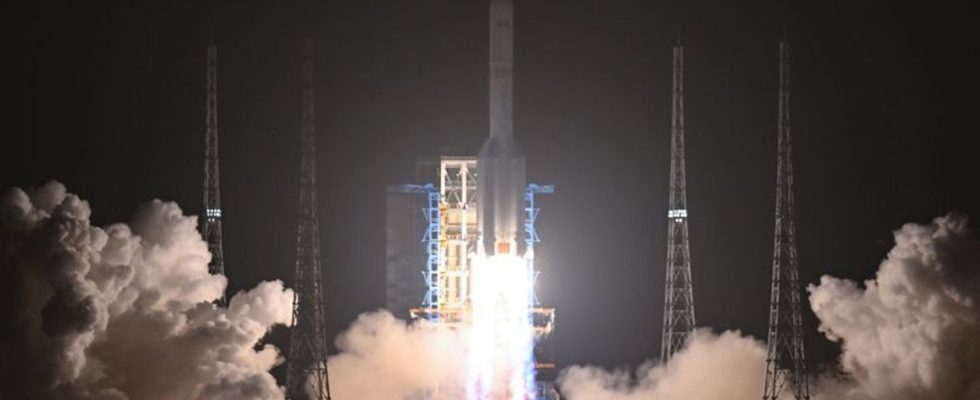space
Guessing about Chinese lunar satellites
A Long March 5-Y7 launch vehicle lifts off from the Wenchang Spacecraft Launch Site in southern China’s Hainan Province. photo
© Guo Cheng/XinHua/dpa
China’s space program is making great strides. But now the People’s Republic admits an “anomaly” in the launch of two satellites.
“The first and second stages of the rocket functioned normally, while the top stage encountered an anomaly during the flight that caused the satellites not to arrive exactly in the specified orbit,” Xinhua said. A solution is being sought.
Moon as a target
Apparently the satellites had the moon in their sights. This was reported by, among others, the usually well-informed US space journalist Andrew Jones and the Hong Kong “South China Morning Post”.
Both cited a study that Chinese scientists published last year in the “Journal of Deep Space Exploration.” It talked about the satellites “DRO-A” and “DRO-B”, which were to be put into orbit around the moon. From there they were supposed to communicate with a third satellite called “DRO-L” in Earth orbit. The “DRO-L” satellite was launched in February.
The aim of the three satellites is to test advanced laser-based navigation between the Earth and the moon. This technology could help China in future lunar missions.
China wants to complete its first manned landing on Earth’s satellite by 2030. The Chinese are already planning another unmanned mission to the moon this year with the “Chang’e-6” mission to take soil samples.
After decades, the moon has once again become the focus of international space travel and has also become a prestigious destination for several competing states due to the technically highly demanding missions. The US space agency NASA wants to bring astronauts to the moon again by 2026.

